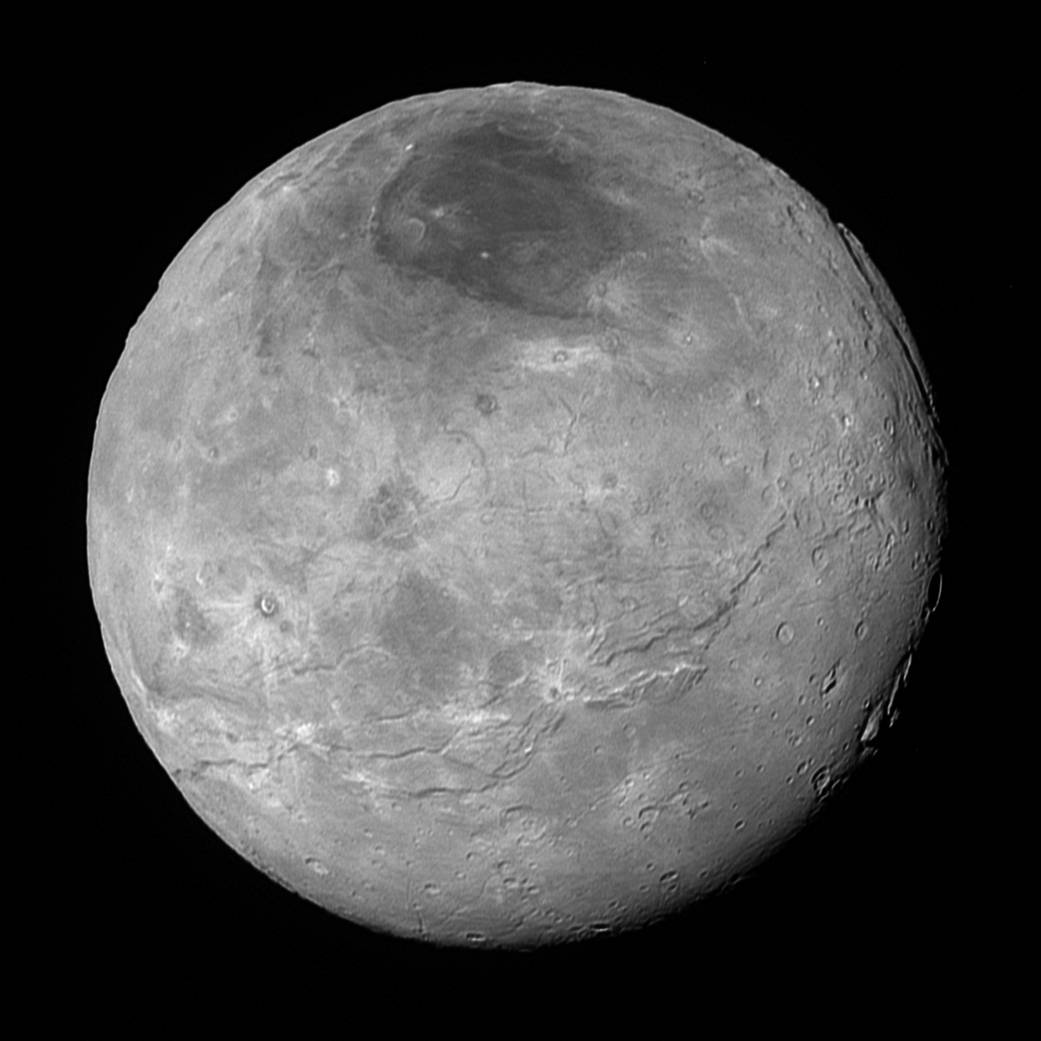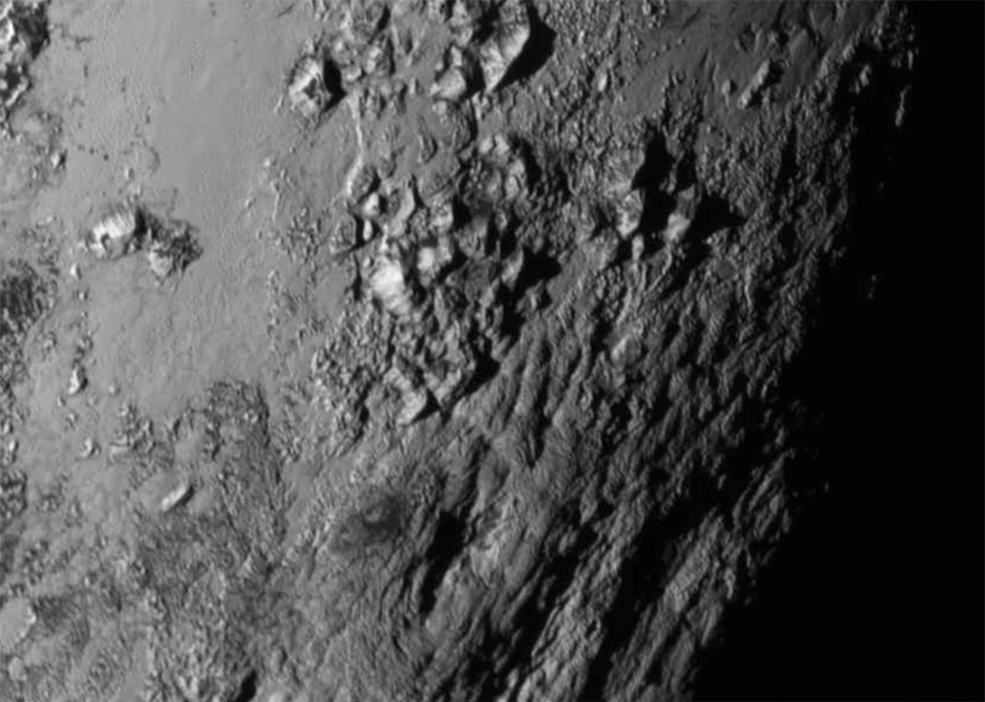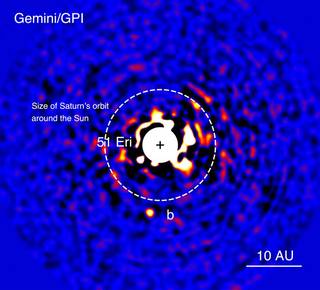This close-up image of a region near Pluto’s equator captured by NASA’s New Horizons spacecraft on July 14, 2015 reveals a range of youthful mountains rising as high as 11,000 feet (3.4 kilometers) above the surface of the dwarf planet. This iconic image of the mountains, informally named Norgay Montes (Norgay Mountains) was captured about 1 ½ hours before New Horizons’ closest approach to Pluto, when the craft was 47,800 miles (77,000 kilometers) from the surface of the icy body. The image easily resolves structures smaller than a mile across. The highest resolution images of Pluto are still to come, with an intense data downlink phase commencing on Sept. 5, 2015.
Credits: NASA-JHUAPL-SwRI
If you liked the first historic images of Pluto from NASA’s New Horizons spacecraft, you’ll love what’s to come.
Seven weeks after New Horizons sped past the Pluto system to study Pluto and its moons – previously unexplored worlds – the mission team will begin intensive downlinking of the tens of gigabits of data the spacecraft collected and stored on its digital recorders. The process moves into high gear on Saturday, Sept. 5, with the entire downlink taking about one year to complete.
“This is what we came for—these images, spectra and other data types that are going to help us understand the origin and the evolution of the Pluto system for the first time,” said New Horizons Principal Investigator Alan Stern, of the Southwest Research Institute (SwRI) in Boulder, Colorado. “And what’s coming is not just the remaining 95 percent of the data that’s still aboard the spacecraft— it’s the best datasets, the highest-resolution images and spectra, the most important atmospheric datasets, and more. It’s a treasure trove. ”
Even moving at light speed, the radio signals from New Horizons containing data need more than 4 ½ hours to cover the 3 billion miles to reach Earth.
Read Full Story Here




